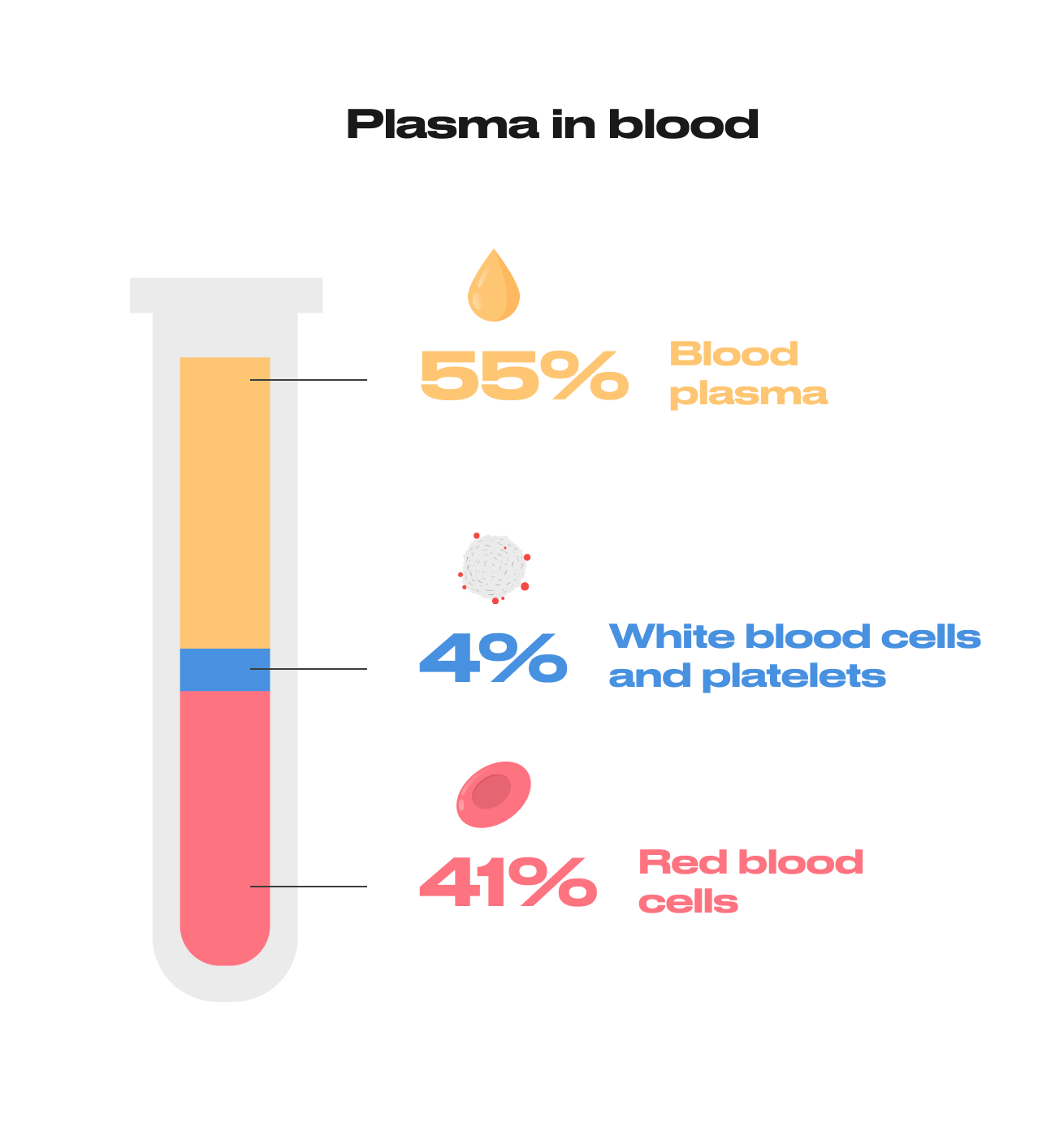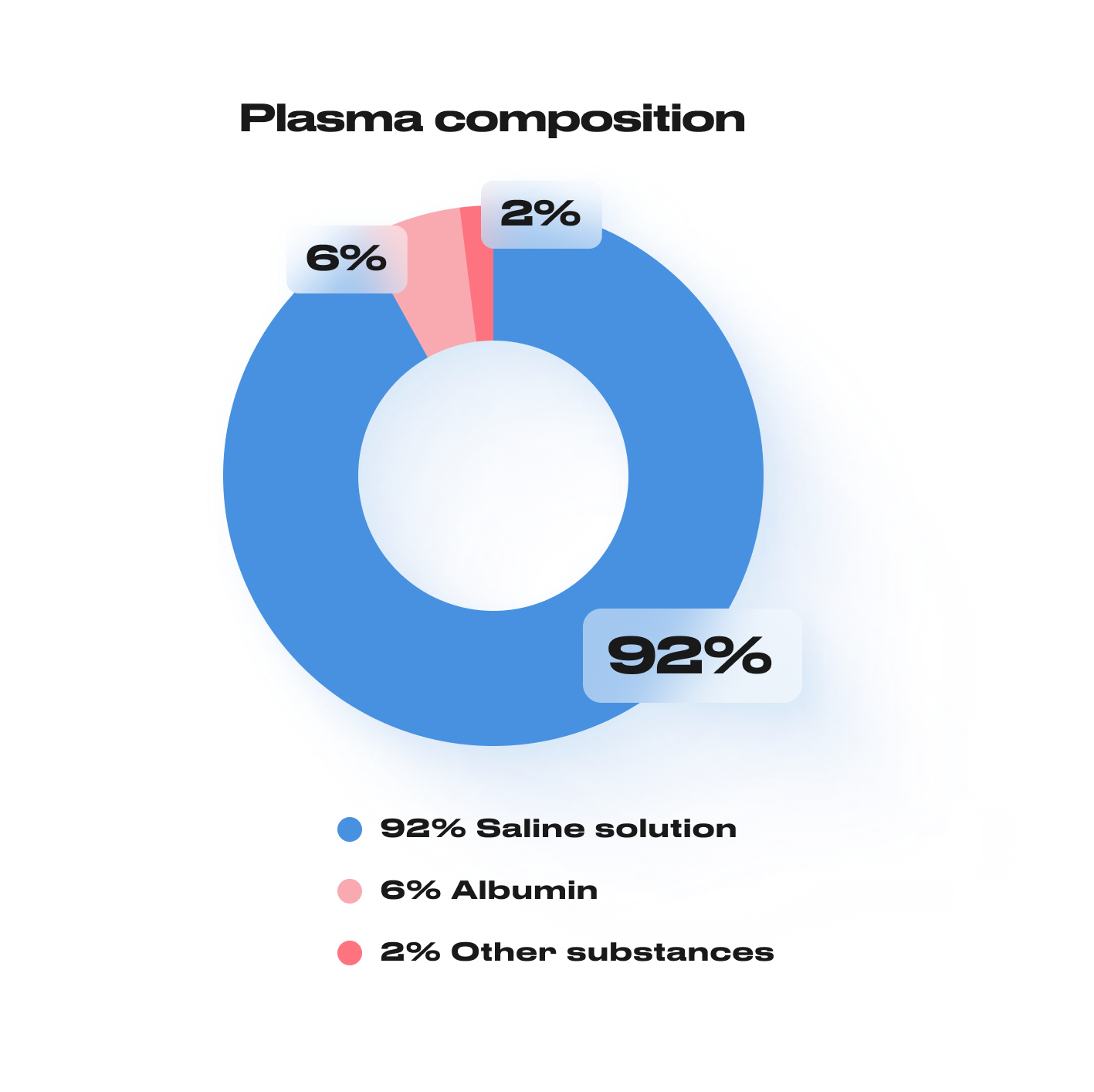Blood Plasma
What is blood plasma?
Plasma is a transparent liquid component of blood with a yellowish colour, which contains a variety of proteins, sugars, fats, minerals and water. In layman’s terms, it can be likened to a lubricant. The red and white blood cells making up the rest of the blood would have difficulty circulating through the bloodstream on their own. That’s why they need plasma.

